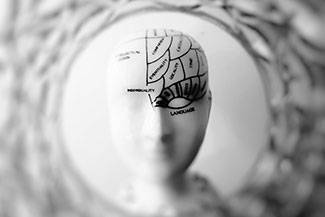
Sensitivity to Light Following a Brain Injury
If you find yourself to be more sensitive to light following a concussion, it could be related to your head injury. That’s especially true if you’ve been experiencing other post-concussion symptoms like eye strain, blurry vision and double vision.
Fortunately, neuro-optometric rehabilitation can effectively alleviate concussion-related light sensitivity (photophobia) and other TBI symptoms.
Symptoms of Light Sensitivity After a Concussion
While light sensitivity is a common problem after a head injury, sometimes it can be hard to recognize, as it often overlaps with other symptoms related to brain injury.
The most common symptoms of post-concussion light sensitivity include:
- Inability to tolerate bright light
- Discomfort from interior lighting or computer screens
- Eye pain
- Eyestrain
- Eye fatigue
- Headaches
Additional post-concussion symptoms may include:
- Vertigo or dizziness
- Cognitive fatigue
- Difficulty multitasking
While these symptoms are not necessarily caused directly by light sensitivity, they often go hand-in-hand. In addition, your brain may be using extra energy to process bright light after a brain injury, limiting the energy it has left for other activities.
Causes of Light Sensitivity After Head Injury
Following a TBI, photophobia tends to occur as a result of damage to a specific part of the brain called the thalamus.
The thalamus filters incoming visual information and sends neural signals to different parts of the brain. After a brain injury, the blood vessels that deliver oxygen to the thalamus can become damaged and withhold vital oxygen and nutrients to this part of the brain.
If the thalamus is not filtering the incoming light correctly, your brain may become overwhelmed with too much visual information. This is why many concussion patients prefer dark rooms that present less visual stimulation.
Note that light sensitivity can also develop as a result of damage to any of the following:
Autonomic Nervous System (ANS)
The ANS governs most of your body’s autonomic processes, such as blood pressure, breathing, heart rate, pupil dilation and more. If an injury disrupts your ANS, your pupils may dilate more than usual, allowing too much light to enter the eye, leading to light sensitivity.
Superior Colliculus
The superior colliculus is the part of the brain that keeps you oriented in space and has some control over your eye muscles. It has the potential to make a person’s vision more sensitive if it malfunctions.
Vestibular System
The brain uses three systems: the inner ear vestibular system, the sense of touch and the sense of sight. These help people determine and understand where they are relative to the things around them.
If your vestibular system is not operating correctly, your brain receives conflicting information from the vestibular and visual systems. To compensate, your brain may increase its sensitivity to the visual system, which can result in light sensitivity.
Following a brain injury, a person will usually have a combination of these problems. Fortunately, they can be treated.
Neuro-Optometric Rehabilitation Can Help
Neuro-optometric rehabilitation is a customized treatment program for patients who have visual deficits due to physical disabilities and TBIs. Neuro-optometric rehab aims to strengthen any reduced visual skills so that the patient can continue engaging in daily activities, like reading and driving, and enjoy a higher quality of life.
A neuro-optometric rehabilitation optometrist evaluates many functions of the visual system, such as how the eyes work together as a team. Treatment options may include using filters and prisms, and customized visual exercises to strengthen the eye-brain connection. To determine if you can benefit from neuro-optometric rehabilitation, schedule a functional vision evaluation with Vision Source Specialists today.
Our practice serves patients from Rapid City, Philip, Spearfish, and Gillette, South Dakota and surrounding communities.






